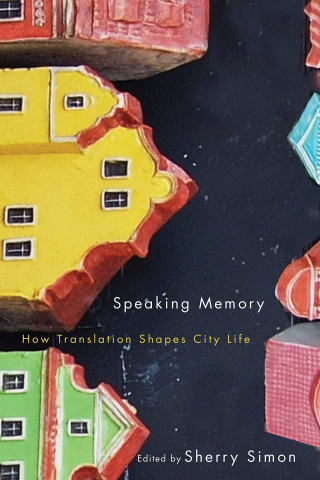 Sherry Simon (ed). Speaking Memory. How Translation Shapes City Life, Montréal/Kingston, McGill-Queen’s University Press (“Culture of Cities” Series), 2016.
Sherry Simon (ed). Speaking Memory. How Translation Shapes City Life, Montréal/Kingston, McGill-Queen’s University Press (“Culture of Cities” Series), 2016.
Commented by Sherry Simon, regular member (May 2020):
Street photographs from the Central European city of Czernowitz in the early 1930s show men and women, singly or in groups, striding confidently down the main street. What language are these city dwellers speaking, as they move past the linguistic hodgepodge of store signs, shop names, placards and advertising billboards—in German, Romanian, Ukrainian, or Yiddish? The city was renowned for its exuberant mixture of languages, a polylingualism more pronounced even than that of neighbouring Habsburg cities. Tourist brochures made much of the multiplicity of languages, as did Yitzchak Peretz in his introduction to the celebrated conference on the future of the Yiddish language held in Czernowitz in 1908: “We stroll in the evening streets, and from different windows the tones of different languages waft out, all different kinds of folk music” (Weinrich in Olson 2010, 32).
But the passage of the city from Habsburg to Romanian rule, and then to a new Ukrainian identity after the Second World War, saw the gradual constriction of language choices. The Habsburg city of Czernowitz was replaced by the Romanian city of Cernauti, then after World War II by the Ukrainian city of Cernivitsi. Although the built environment of the city remained largely the same, the meaning and function of urban spaces was transformed. The links that identified street names and street patterns as replicas of Viennese originals were severed. The main street once called the Herrengasse became the Strada Iancu Flondor during the Romanian regime, then, after the Second World War, was renamed for the Ukrainian writer Olha Kobylyanska. Statues were replaced (the statue of Schiller gone, Kobylyanska in his place) and buildings repurposed (the synagogue turned into a movie theatre). But the fact that returning visitors continue to refer to the city’s street names in German underlines the fact that the city for them remains a mental construct, experienced and interpreted through the language of memory.
The takeovers of regime change are one spectacular and highly visible way in which cities experience disputes over language as memory. But the interactions of competing languages are a feature of all urban life. This book argues that all cities, past and present, can be understood as fields of translational forces. In every city, the idioms of successive waves of migrants, administrative authorities, and traders enter into a conversation which is a continual reinvention of memory. In every city, connections across language communities write and rewrite the history of the city. From the nineteenth-century multilingual city to today’s metropolis, language fractures and connections shape urban territory. Differing forms of transfer transform the ways in which the “foreign” and the “native” are maintained, the ways in which the horizontal flow of narratives meets the vertical dramas of the past. Creators devise cross-language “leaps” that cause deviations in language traffic, and confound customary divisions across tongues. The memory of the city is a result of the layered, uneven stories which are translated from and into its languages. It is the goal of this volume to make these transactions more visible, to bring to light the translational nature of urban life. Among the cities discussed are Dublin, Montevideo, Montréal, Prague, and Vilnius.
